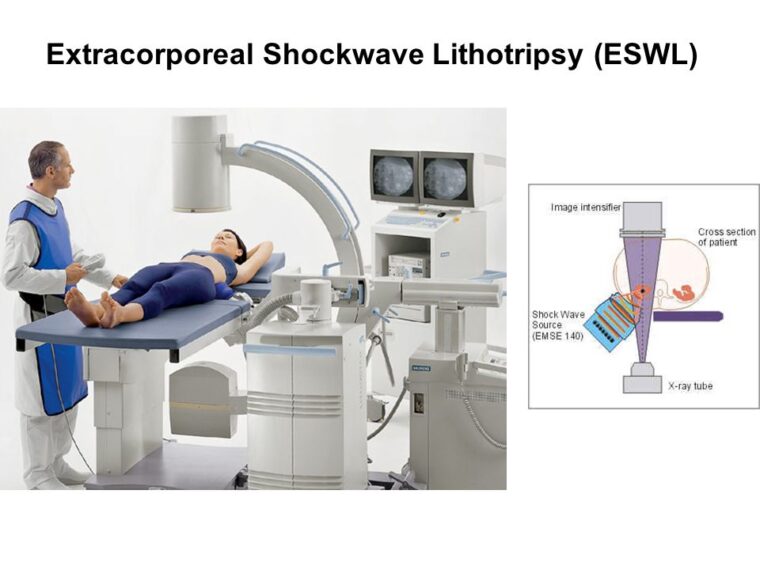Extracorporeal shock wave lithotripsy(ESWL) uses shock waves to break up calculi (renal stones) in the kidney, ureter or bladder without requiring surgery. ESWL involves using high-energy shock waves to target and fragment urinary stones non-invasively. The fragmented stones are then small enough to pass through the urinary tract naturally. ESWL is generally considered safe and effective for treating small-to-medium size renal and ureteral calculi. Advancements in shock wave technology including integration of advanced imaging modalities with lithotripters have enabled precise targeting of calculi and treatment of larger and harder stones.
The Global Extracorporeal Shock Wave Lithotripsy Market is estimated to be valued at Us$ 510.34 Mn in 2024 and is expected to exhibit a CAGR Of 7.2% over the forecast period 2024 To 2030.
Key Takeaways
Key players operating in the Extracorporeal Shock Wave Lithotripsy are William Grant & Sons, Pernod Ricard, Diageo Plc, Bacardi Limited, Suntory Holdings, Aceo Ltd., Ben Nevis Distillery, Edrington, Louis Vuitton Moët Hennessy and Gordon & MacPhail. The key players are focusing on developing advanced lithotripters integrated with ultrasound, CT and fluoroscopy guidance for accurate stone localization and fragmentation.
The increasing prevalence of urolithiasis and rising geriatric population prone to developing kidney stones are offering significant growth opportunities for players in the ESWL market. Additionally, developments towards miniaturizing lithotripters and making the technology portable is further expected to drive the market growth during the forecast period.
Technological advancements including the integration of advanced imaging modalities like ultrasound, CT and fluoroscopy with lithotripters has enabled precise localization and targeting of urinary calculi. Ongoing research towards the development of robot-assisted lithotripsy is also expected to transform the market.
Market Drivers
The primary driver propelling the Extracorporeal Shock Wave Lithotripsy market growth is the rising prevalence of urolithiasis globally. According to the National Kidney Foundation, approximately 50-70% of people who experience a kidney stone will have another episode within 10 years. The risk is higher among older people, men and individuals living in hot climates. Other factors such as obesity, diabetes, inadequate fluid intake and metabolic disorders are also contributing to the increasing incidence of kidney stones. ESWL being a minimally invasive procedure for treating renal calculi continues to be a favored treatment option. Additionally, technological advancements enabling high success rates with ESWL are expected to support the market growth over the forecast period.
Current challenges in Extracorporeal Shock Wave Lithotripsy Market:
The extracorporeal shock wave lithotripsy market is currently facing few challenges which includes risk of infection and radiation exposure for patients during the procedure. Also, the chances of stone fragments remaining in kidney after lithotripsy is another challenge as they may require additional treatment. Affordability of lithotripsy devices and its maintenance costs act as a barrier, especially in low and middle-income countries. Lack of reimbursement policies for lithotripsy in some regions limits its adoption. Skill requirement of expert urologists for optimum stone fragmentation is another challenge.
SWOT Analysis
Strength: Non-invasive procedure; offers quick relief from renal stone pain; high stone clearance rates; widely accepted first line treatment.
Weakness: Risk of multiple treatment sessions; chance of auxiliary procedures; high capital cost of lithotripsy systems.
Opportunity: Growth in geriatric population increasing stone disease prevalence; developing markets in Asia Pacific offer high market potential.
Threats: Alternatives like percutaneous nephrolithotomy gaining popularity; reimbursement hurdles in some countries.
The Global Extracorporeal Shock Wave Lithotripsy Market In terms of value, the extracorporeal shock wave lithotripsy market in North America holds the major share currently owing to growing incidence of urolithiasis and favourable reimbursement scenario. Europe is another major revenue generating region due to rising awareness about lithotripsy and increasing technological advancements. Asia Pacific is poised to witness the fastest growth during the forecast period given to rising healthcare investments, growing medical tourism and presence of high potential markets like India and China.
In terms of growth rate, Asia Pacific region will exhibit highest CAGR during 2024-2030. This is attributed to rising awareness regarding urolithiasis treatment in countries like China and India, increasing healthcare spending, and presence of high number of undiagnosed stone disease population. Additionally, growing medical tourism industry receiving patients from western countries will support the regional market expansion.
Note:
1. Source: Coherent Market Insights, Public sources, Desk research
2. We have leveraged AI tools to mine information and compile it

